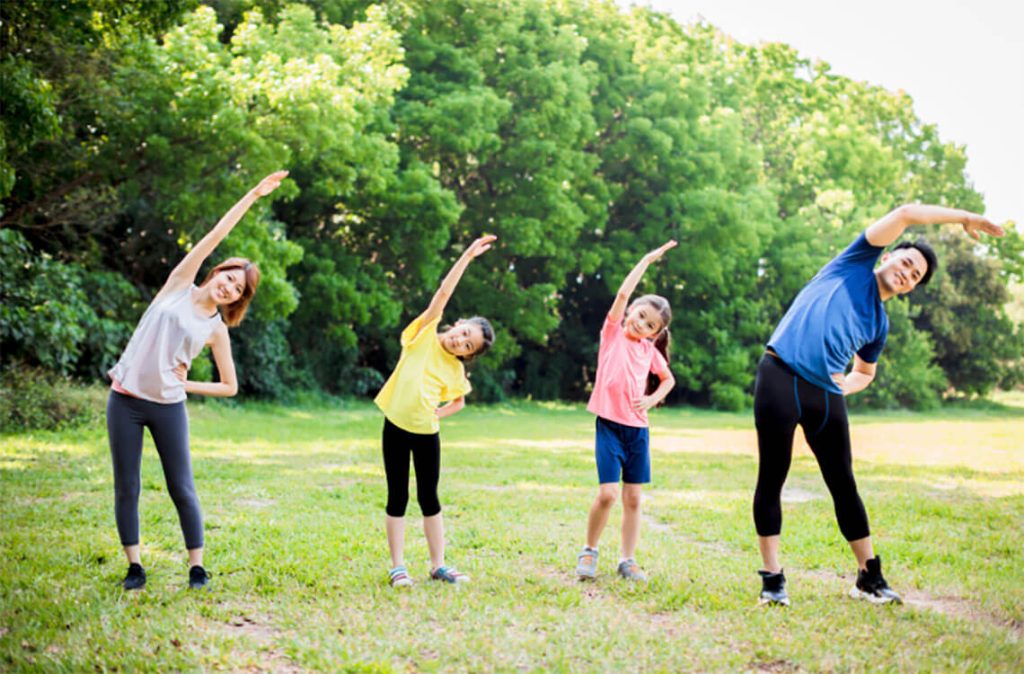We’ve been told that all exercise is good exercise.
But what if there was more to it than that? What if there was a type of exercise perfectly fitted to your specific generation.
According to various fitness studies, not all exercises are created equal.
That is, different age groups benefit from certain exercises more than others.
While things like weight, diet and family history play a huge role in which type of physical activity is appropriate for them.
Here are the type of exercises that are most ideal for each age group.
Exercise Guide by Age Group
Children
For kids, the sky is the limit with exercise.
Just like with their boundless potential, children can engage in any physical activity under the sun as long as they are safe.
But according to experts, there is no easier exercise for children than play.
Whether that’s playing tag, climbing trees, racing, playing bicycles or whatever it is that kids used to do before iPads.
Parents need to get their kids moving as much as possible.
This will inculcate an active lifestyle years down the line.
As long as they are spending time sweating outdoors and having fun with their friends.
Teens
Growing adolescents who are at the prime of their lives can benefit a lot from exercise.
Not only to keep them healthy, but also to boost their academic performance.
But team sports in particular may be more beneficial than any other solo activity. Especially in helping your teen develop essential social skills outside of the family.
Some good team sports that you can get your kids to sign up for can include basketball, football, rugby, and even cheerleading.
Twenties
Apparently tennis is the ideal sports for young adults in their 20s.
But it’s not just the ‘staying active’ part that makes this option ideal.
As we move away from college and enter the workforce, it may get harder to make friends.
Meeting new people at tennis courts or in tennis teams can help broaden one’s social circles. And studies have shown that loneliness is bad for health.
And since tennis is all the rage, there will be plenty of people your age who you can meet and form tight-knit friend groups with after matches.
Thirties
Career and parenthood abound once you leave your twenties into the fully adult world in your 30s.
This may be where you’re finding it hard to set aside time to be healthy and fit.
The trick is to make it as hassle-free as possible.
Online classes is where it’s at. Virtual exercises performed through a zoom call can be just the thing.
But there are other options as well.
HIIT exercises, for instance, which are intense bodyweight workouts which can be performed in under 30 minutes with no equipment or coaching.
Forties
You may be curling your toes already at the mere thought of exercising in your 40s.
But it’s important not to give up the active lifestyle now.
You may not have the energy to play tennis or engage in team sports.
The remedy? Running.
But studies show that running can actually help strengthen joints and prevent osteoarthritis later in life.
The good news doesn’t stop there!
Another study found that running in your forties significantly reduces premature mortality death.
The same benefit they share with people who had exercised since their teens.
Fifties
If there’s ever the time to start pumping iron, it’s in your mid-life.
As soon as your hit the ‘fifty years old and up’ age group, osteoporosis is already staring you down the corner.
People often think lifting weights is only good for building muscles, but it works wonders for bone density as well.
And, no, you don’t have to lift 100 kg dumbbells to see any benefits. Light weights work just as well.
Women especially should lift weights in their fifties as they are more prone to osteoporosis.
Sixties and Seventies
You likely have grandkids now and a pension.
But that doesn’t mean you should be a couch potato.
For senior citizens, it’s best to take thing slow.
Brisk walking is preferable as it’s less strenuous on the joints.
The trick is to keep moving as much as possible and avoid a sedentary lifestyle.
According to research, sitting down for long periods of time have been correlated with diabetes, cardiovascular disease and death from all causes.
Eighties and Above
As you approach your sunset years, the body starts to slow down.
But that doesn’t mean you should stop moving.
It’s all the more important to stay active, if only to squeeze out a few more years.
A study showed that octogenarians who continued to perform daily physical activity were less prone to developing Alzheimer’s Disease.
But don’t go running marathons now. Opt for gentler exercises. Particularly those that focus on flexibility and mobility.
Those in their eighties should join group exercise classes not only for social purposes but mental health ones as well.
An Exercise for Every Age
With these exercise suggestions, there’s no more excuse not to be active, regardless of your age group.
Let us keep moving for a healthier, longer life!
And it all starts with getting off the couch, lacing up your sneakers and getting out the door.
Disclaimer: The information provided in this article is for informational purposes only and should not be considered as medical advice from Motherhood. For any health-related concerns, it is advisable to consult with a qualified healthcare professional or medical practitioner.
For more insightful stories and fun recipes, stay tuned to Motherhood Story!
